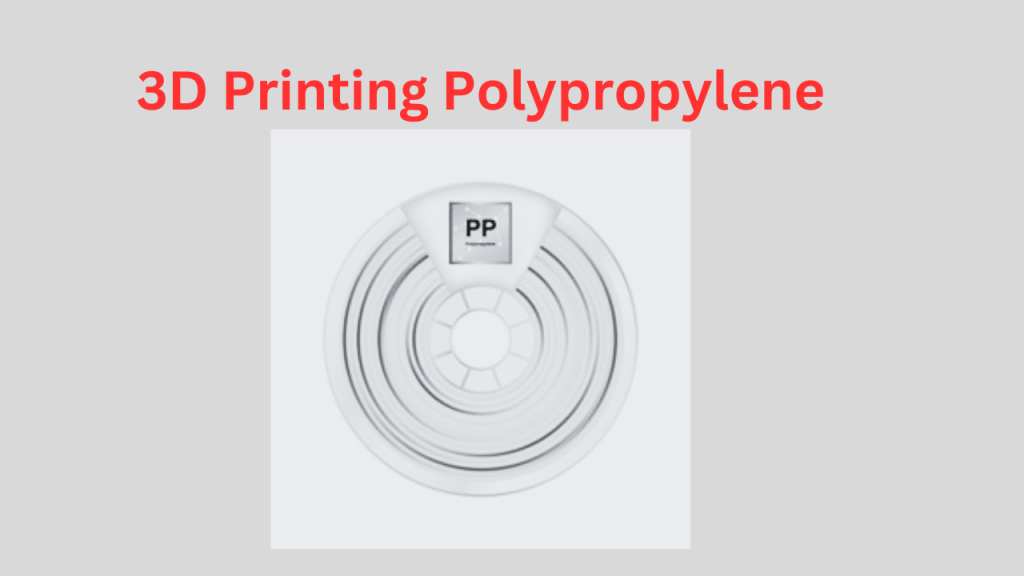Polypropylene (PP) is a versatile thermoplastic that has gained popularity in the world of 3D printing. With its unique properties and characteristics, polypropylene offers a range of benefits for various applications. In this ultimate guide, we will explore everything you need to know about 3D printing with polypropylene, from understanding the material to mastering the printing process.
Understanding Polypropylene (PP)
Properties and Characteristics of Polypropylene
Polypropylene is a type of plastic known for its high strength, flexibility, and chemical resistance. It is lightweight, making it ideal for applications where weight reduction is crucial. Additionally, polypropylene exhibits excellent impact resistance and has a low coefficient of friction, making it suitable for moving parts and mechanical components.
Advantages and Disadvantages of Using Polypropylene for 3D Printing
One of the significant advantages of printing with polypropylene is its exceptional chemical resistance, allowing it to withstand exposure to various substances without degrading. Polypropylene also has a high melting point, making it suitable for functional parts that require heat resistance. However, it’s important to note that polypropylene can be challenging to print PP due to its low surface energy, which affects bed adhesion and layer bonding.
Getting Started with 3D Printing Polypropylene
Overview of Polypropylene 3D Printer
Not all 3D printers are compatible with polypropylene filaments due to the material’s specific requirements. When choosing a 3D printer polypropylene, look for models that offer a heated build plate, enclosed chamber, and good temperature control. These features of pp 3d printer help prevent warping and promote successful prints with polypropylene.
Recommended Settings and Parameters for Successful Printing
To achieve optimal results when printing with polypropylene, it’s essential to fine-tune the settings and parameters. Start by adjusting the nozzle temperature, typically ranging between 230-250 degrees Celsius, depending on the specific PP 3d printer filament. Adjust the bed temperature to promote adhesion, usually around 80-100 degrees Celsius. Experiment with different layer heights and print speeds to find the right balance for your desired print quality.
Proper Bed Adhesion Techniques for Polypropylene
Polypropylene’s low surface energy makes it prone to poor bed adhesion. To improve adhesion, ensure that the print bed is clean and free from any oils or debris. Applying a thin layer of polypropylene-specific adhesive, such as a glue stick or specialized bed adhesion spray, can help enhance bonding. Additionally, consider using a raft or brim to provide extra support during the printing process.
Designing for Polypropylene 3D Printing
Best Practices for Designing with Polypropylene in Mind
When designing for 3D printing with PP, keep in mind the material’s unique properties. Aim for designs that utilize the material’s flexibility, strength, and chemical resistance. Avoid sharp corners or thin walls, as they may become brittle and prone to breaking. Incorporate rounded edges and fillets to distribute stress and improve durability.
Tips for Optimizing Designs for Strength and Flexibility
Polypropylene excels in applications that require both strength and flexibility. To optimize designs for these characteristics, consider adding ribs or honeycomb structures to increase rigidity while preserving flexibility. Use fillets and chamfers to reduce stress concentrations, and add appropriate clearance for moving parts.
Considerations for Complex Geometries and Support Structures
Printing complex geometries and support structures with polypropylene can be challenging. To ensure successful prints, pay attention to overhangs and bridges, adding support structures where necessary. Consider using soluble support materials or manual support removal techniques for intricate designs. It’s important to balance the need for support with the desire for a smooth, finished surface.
Polypropylene Filaments and Materials
Overview of Available Polypropylene Filaments and Their Characteristics
There are several 3D printing polypropylene filament available in the market, each with its own set of characteristics. Some popular options include PP homopolymer and PP copolymer filaments. PP homopolymer offers excellent chemical resistance and strength, while PP copolymer provides enhanced flexibility and impact resistance. Research different brands and evaluate their specific properties to find the filament that best suits your project requirements.
Comparison of Different Brands and Types of Polypropylene Materials
When selecting a polypropylene filament, consider factors such as printability, color options, and price. Some well-known brands offering polypropylene filaments include Formfutura, Polymaker, and Polyalchemy. Read reviews, check compatibility with your printer, and compare prices to make an informed decision.
Tips for Storing and Handling Polypropylene Filaments
Polypropylene filaments can be sensitive to moisture absorption, which can negatively impact print quality. It’s essential to store polypropylene filaments in a dry and sealed container to prevent moisture absorption. Consider using desiccant packets or airtight bags to maintain the filament’s dryness. When handling polypropylene filaments, wear gloves to avoid transferring oils or moisture from your hands onto the filament, as this can affect the print quality.
Applications of Polypropylene 3D Printing
Industries and Use Cases for Polypropylene 3D Printing
3D PP printing is widely used across various industries due to its unique properties. Some common applications include:
- Automotive: Creating functional prototypes, interior components, and custom parts.
- Packaging: Designing durable and lightweight packaging solutions.
- Medical: Producing surgical instruments, prosthetics, and medical devices.
- Aerospace: Manufacturing lightweight components and tooling.
- Consumer Goods: Designing household items, toys, and sporting equipment.
Benefits of Polypropylene 3D Printing in Different Applications
Polypropylene offers several advantages for different applications. Its chemical resistance makes it suitable for contact with various substances, making it ideal for packaging and medical applications. The material’s flexibility and impact resistance are beneficial in automotive and aerospace industries where durability is crucial. Additionally, polypropylene’s lightweight nature contributes to weight reduction and cost savings in many applications.
3D printing with polypropylene opens up a world of possibilities for creating functional and durable parts across various industries. By understanding the unique properties of polypropylene, optimizing designs, and fine-tuning printing parameters, you can unlock the full potential of this versatile material. Whether you’re designing prototypes, automotive components, or packaging solutions, pp 3d print offers numerous benefits and opportunities for innovation.



